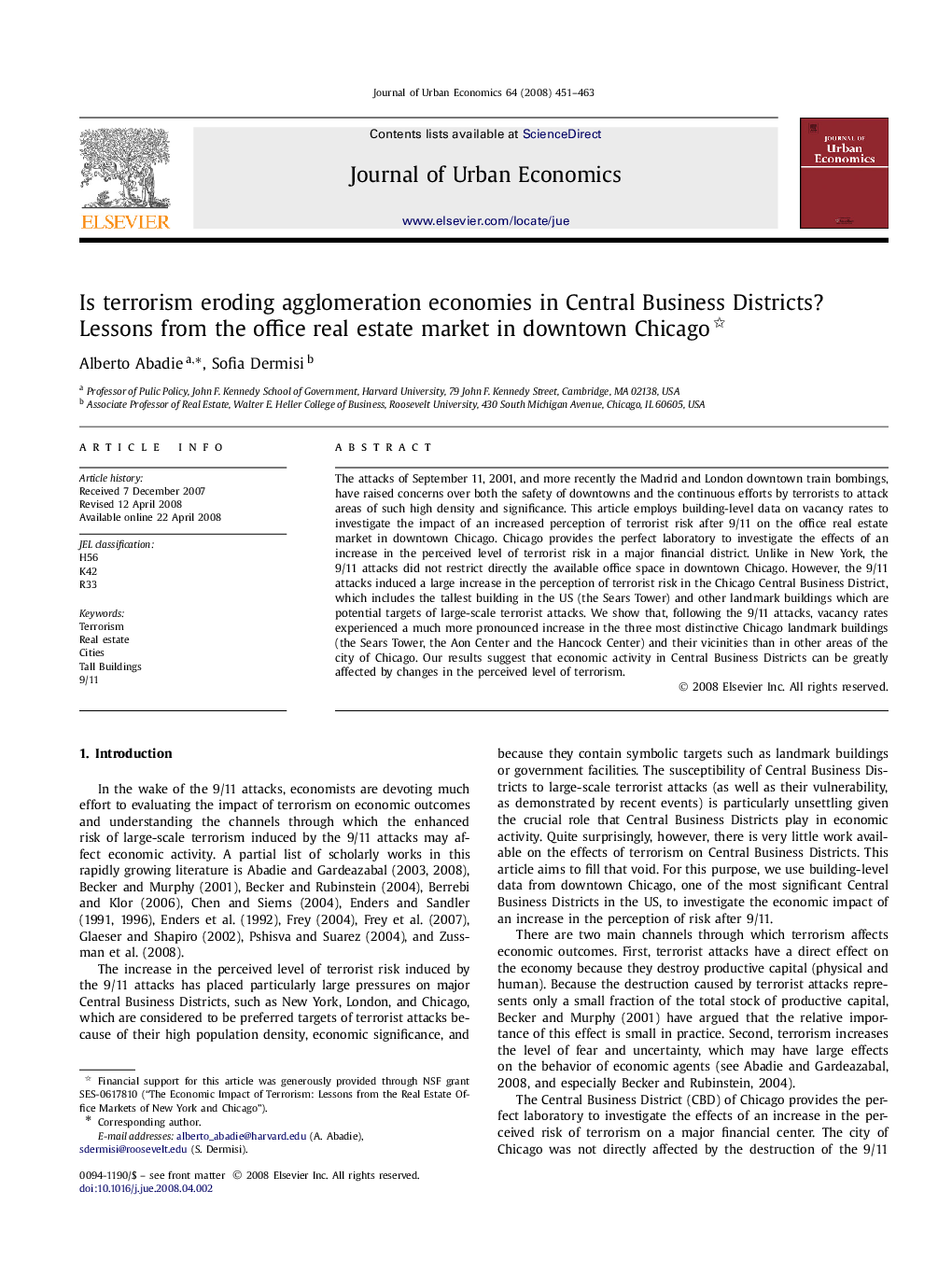| Article ID | Journal | Published Year | Pages | File Type |
|---|---|---|---|---|
| 971596 | Journal of Urban Economics | 2008 | 13 Pages |
The attacks of September 11, 2001, and more recently the Madrid and London downtown train bombings, have raised concerns over both the safety of downtowns and the continuous efforts by terrorists to attack areas of such high density and significance. This article employs building-level data on vacancy rates to investigate the impact of an increased perception of terrorist risk after 9/11 on the office real estate market in downtown Chicago. Chicago provides the perfect laboratory to investigate the effects of an increase in the perceived level of terrorist risk in a major financial district. Unlike in New York, the 9/11 attacks did not restrict directly the available office space in downtown Chicago. However, the 9/11 attacks induced a large increase in the perception of terrorist risk in the Chicago Central Business District, which includes the tallest building in the US (the Sears Tower) and other landmark buildings which are potential targets of large-scale terrorist attacks. We show that, following the 9/11 attacks, vacancy rates experienced a much more pronounced increase in the three most distinctive Chicago landmark buildings (the Sears Tower, the Aon Center and the Hancock Center) and their vicinities than in other areas of the city of Chicago. Our results suggest that economic activity in Central Business Districts can be greatly affected by changes in the perceived level of terrorism.
